If you want to know about the landscape garden or Introduction of landscaping and its role or terminology used in landscape, please click the link.
Chinese landscape architecture has a long and rich history that spans several thousand years. It encompasses a wide range of practices and techniques, including garden design, urban planning, and environmental management.
1) Chinese landscape features
- A Chinese garden is formed by three-fold spaces so as to provide human-scale living spaces:
- Big garden
- small garden
- garden-villas
- Combination of such natural elements as rock, water, trees and flowers and artificial elements as architecture, painting and poetry.
- The design concept was to provide a “spiritual utopia” for people to come back to Great Nature, to come back to one’s inner heart, to come back to ancient idealism
- Detailing: Most exquisite elements can be found in details. For eg : footpaths, imaginatively patterned with colored pebbles into a variety of designs along the ground. A common motif is that of the square within a circle, signifying the ancient belief that the “heaven is round and the earth square“
- Good luck omens also found. Whilst the bat and crane symbolize good fortune and longevity, the fishing net portends affluence. There are, in addition, often depictions of scenes from well-known traditional paintings and legends.
2) Four elements of Chinese gardens
Chinese landscape architecture is the use of symbolism and metaphor. Elements like rocks, water features, and plants are often chosen for their symbolic significance, with each element representing a different aspect of the natural world or the human experience.
i) Rocks
Rocks were believed to have
- T’ang dynasty – ORIGIN
- Served as natural statues
- a concentrated amount of natural energy
- symbolized the dwelling places of the Daoist immortals
Types of rocks
Recumbent
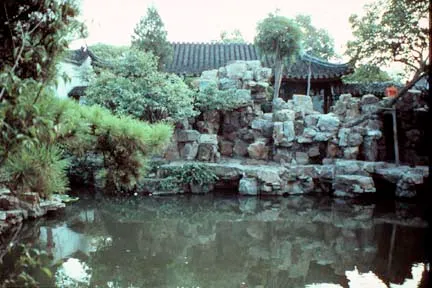
Artificial mountain in garden of the master of nets
Standing

Lake Tai rock at the Garden of the Master of Nets, Suzhou
ii) Water
- Serves as a balance for other elements in nature and in the garden
- Semi-circular bridges chosen because they “complete themselves” as they are reflected in the water, symbolic reference to the moon. One expression equates watching the moon (as reflected in water) with “washing the soul
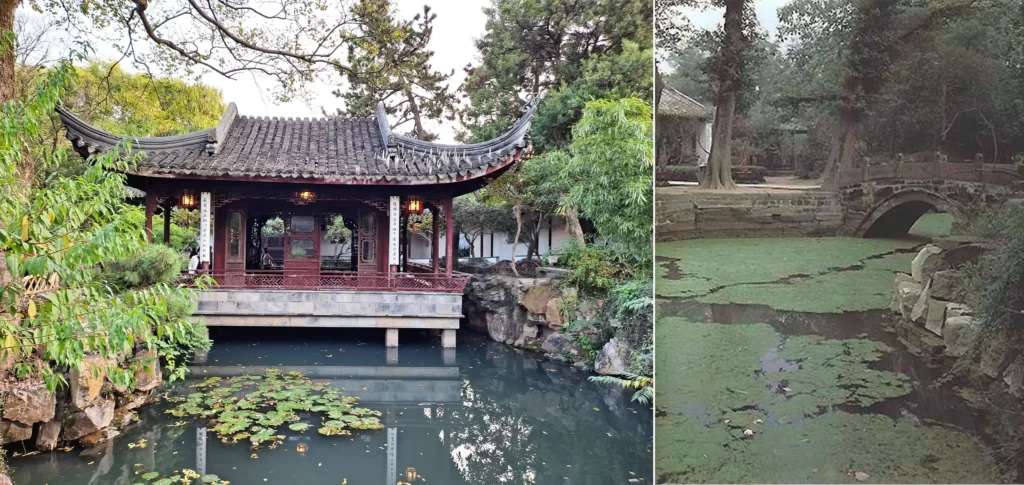
iii) Buildings
- CONNECTIONS by covered walkways (PAVILLIONS)
- VISUAL LINKAGE by views glimpsed through open doorways, lattice windows, and decorative openings in walls
- Picturesque views framed by parts of the buildings
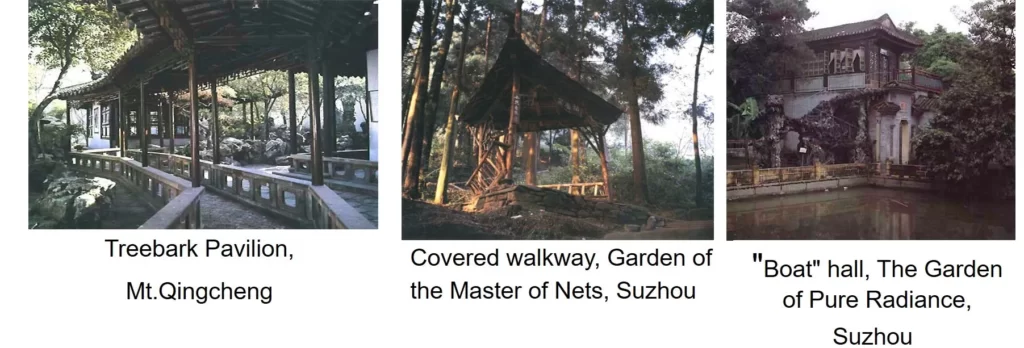
iv) Plants
- symbolic of meaning in poetry and literature
- pine, cypress, plum and bamboo
- flowering plants like the peony, orchid, and chrysanthemum
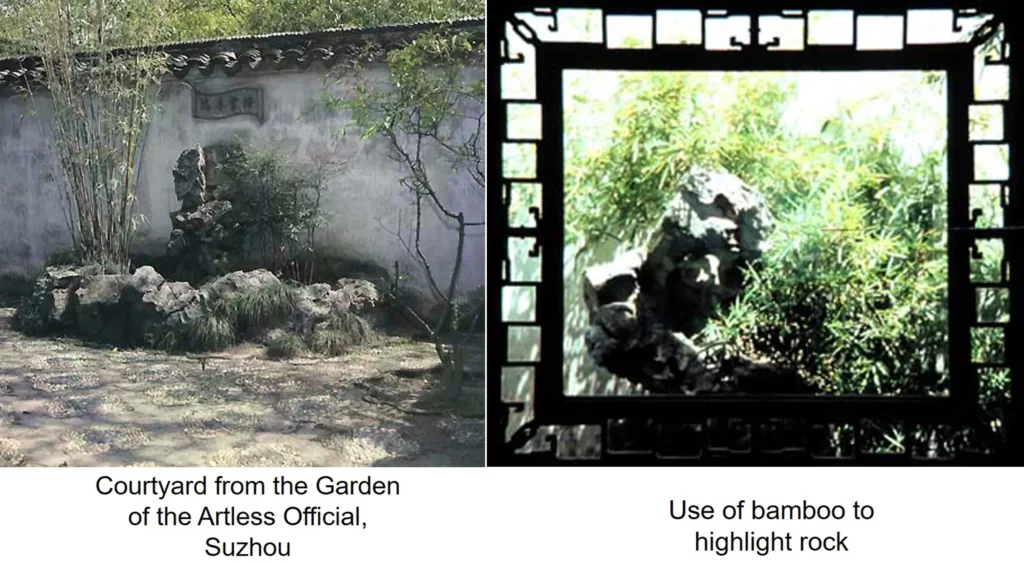
- Seasonal arrangements of brightly colored flowering plants often highlight an area that might otherwise go unnoticed.
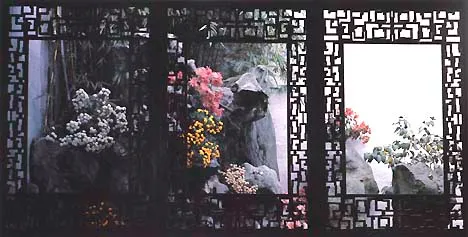
3) History

4) Difference between japaneese & chineese gardens
- Japanese garden has: ‘exquisite arrangements of stone and moss, its manicured pines and dry streams, and above all its sense of being so perfect in itself that the visitor feels even the intrusion of his own senses onto the garden constitutes a violation‘
- A chinese garden is ‘confusing and dense, dominated by huge rock-piles and a great number of buildings all squeezed into innumerable, often very small spaces’.
- Chinese gardens are cosmic diagrams, revealing a profound and ancient view of the world and of man’s place in it’. Yet they have also been:
–The background for a civilizations
–Places where great poets and painters have met and worked
–Settings for peaceful contemplation
–Settings for family festivals and elaborate dramatics
5) Humble administrator’s garden
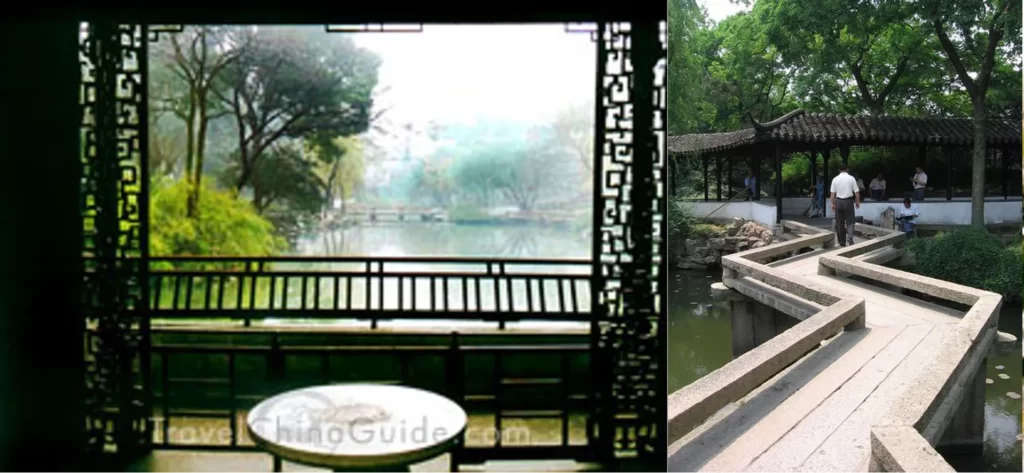
- The Humble Administrator’s Garden (Zhuo Zheng Yuan) is one of four great chinese gardens located in Suzhou.
- Located in the northeastern part of Suzhou city, Humble Administrator’s Garden, with a total area of 51,950 square miles.
- The garden is representative of Chinese classical gardens in the Ming Dynasty.
- Focused on a central pond with pavilions, terraces, chambers, and towers located nearby.
- Humble Administrator’s Garden is divided into three parts: the eastern(residential), middle(main-garden) and western(inner-garden) parts.
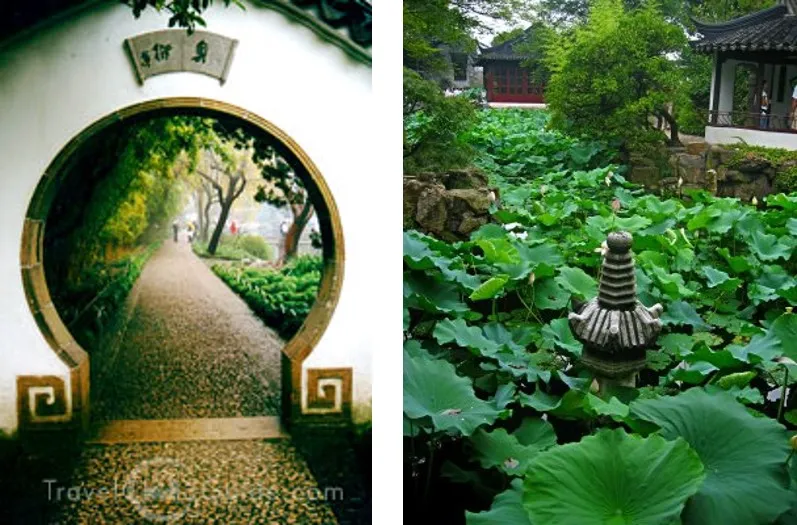
- The middle part is the cream of the garden with marvelous mountains, clear water, exquisite buildings and exuberant trees and flower and of the scenery in the south of the lower Yangtze River.
- Elaborately conceived, the designer of the garden used the architecture technique know as “borrowed view from afar” in the layout of this part, aiming to enlarge eyeshot within a limited space.
- Seen westward, a pagoda would be seen sitting in western garden, which actually is situated 1km away from the garden.
- Humble Administrator’s Garden is a typical example of the art and treasure house containing arts of architecture, calligraphy, carving, painting, and bonsai.
6) The summer palace in Beijing

- Composed mainly of Longevity Hill and Kunming Lake.
- The Summer Palace occupies an area of 294 hectares (726.5 acres), three quarters of which is water. Guided by nature, artists designed the gardens exquisitely so that visitors would see marvelous views and be amazed by perfect examples of refined craftwork using the finest materials.
- The Summer Palace can be divided into four parts: the court area, front-hill area, front-lake area, and rear-hill and back-lake area.

- Composed mainly of Longevity Hill and Kunming Lake.
- The Summer Palace occupies an area of 294 hectares (726.5 acres), three quarters of which is water. Guided by nature, artists designed the gardens exquisitely so that visitors would see marvelous views and be amazed by perfect examples of refined craftwork using the finest materials.
- The Summer Palace can be divided into four parts: the court area, front-hill area, front-lake area, and rear-hill and back-lake area.
7) The mountain resort
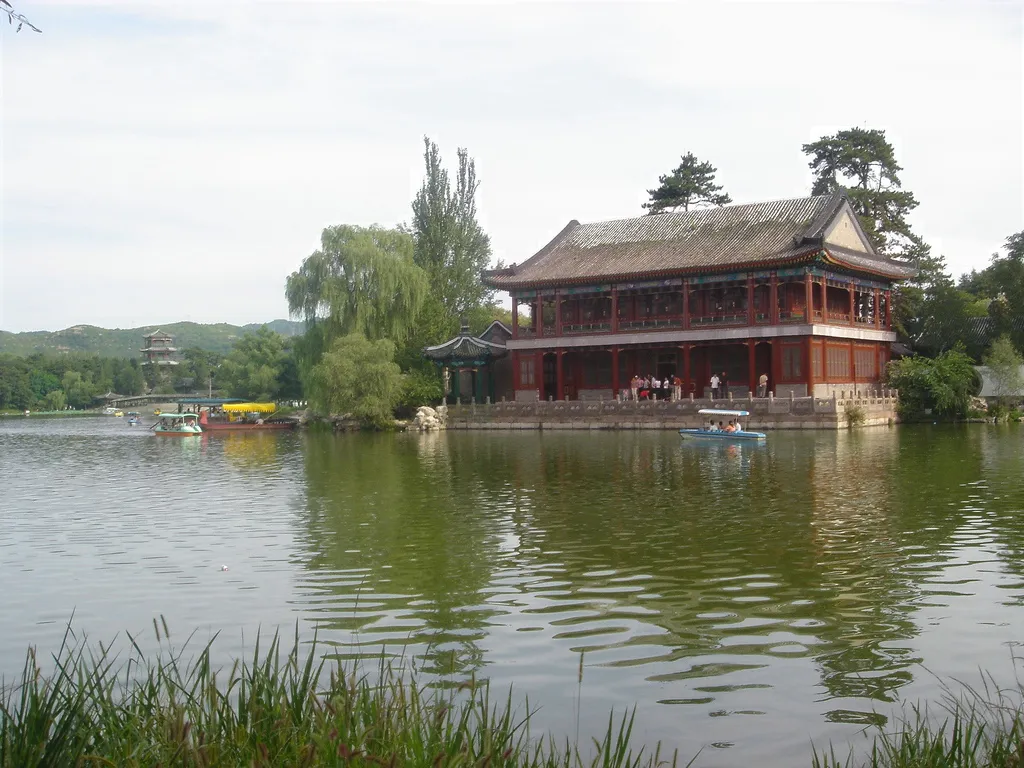
- It covers a total area of 564 square kilometers, and is twice as large as the Summer Palace in Beijing.
- The architectural style of the palace is very unique, and similar to the resident houses in North China.
- Black bricks and gray tiles, rock steps and the cute courtyard covered with old pine trees look very old-timey, peaceful and elegant.
Scenic Area — Lake Zone, Plain Zone and Mountain Zone
Lake Zone
- Water gives everything infinite vitality and energy, so the scenery of the lake zone sparkles like a diamond in the Mountain Resort.
- Lying in the southeast of the resort, the lake zone has nine lakes and ten islands .
Plain Zone
- Going north, you come to the plain zone. Facing the palace wall on the east with the mountains rising to the west, this area is mainly covered with grassland and woods.
Mountain Zone
- There are four great valleys from north to south: Pine-cloud Valley, Pear Valley, Pine Valley and Filbert Valley. There you can enjoy the mountain scenery completely, including undulating hills, flourishing woods, steep peaks, gurgling streams and white waterfalls .
8) Lingering – garden
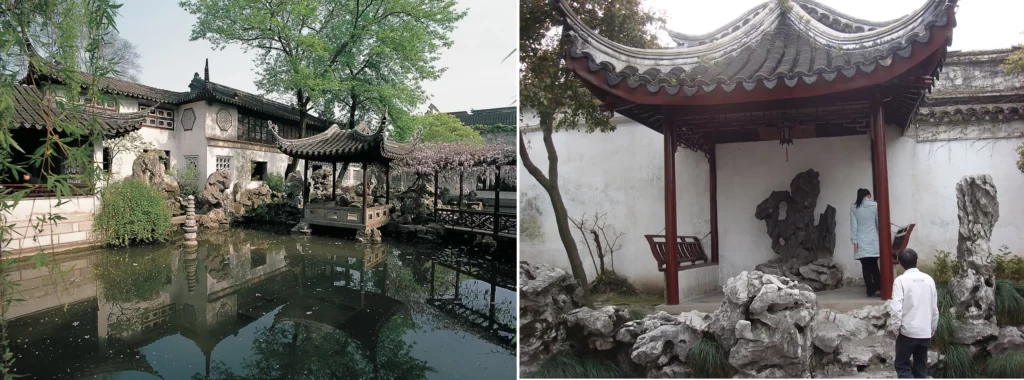
- private garden – at residence of Xu Taishi
- has multi-story houses in the front and halls in the rear, and a range of stone mountains built by the well-known master Zhou Bingzhong, resembling a long scroll of landscape painting.
- garden is separated into the eastern(garden courts),central(man-made mountain & lake), northern(cottages with bamboo fences)and western (woody hills)parts
- artificial hill made from Taihu rock(6.5 m high)
9) Scholar Gardens
- Chinese civil servants made places in which to meditate – on a highly intellectual representation of nature.
- Rocks vital component of scholar gardens. They brought mountains into towns. Small rocks were used to rest calligraphy brushes upon. Large stones were placed in gardens, often grouped to suggest the mountain peaks which featured in landscape paintings or placed by water to suggest the Isles of the Immortals. The Chinese word for ‘landscape’ is shanshui, meaning ‘mountains and water’.
- Scholars led the way in developing this type of garden and that their design ideas were followed by emperors.
- For eg : Humble administrator’s garden
10) Feng-shui garden
- Garden considered Yin and home Yang, so the effect that house & garden together create should be balanced
- flowerbeds and paths in the garden should be curved in order to counter the straight lines and angles of the house.
- use of birdbath or fountain as element water(symbolic of wealth)
- Use of plants with thick fleshy leaves
- colorful flowers as they attract positive energy.
Today, Chinese landscape architects continue to draw on these ancient traditions while also incorporating modern techniques and technologies to create innovative and sustainable designs that respond to the unique challenges of the 21st century.